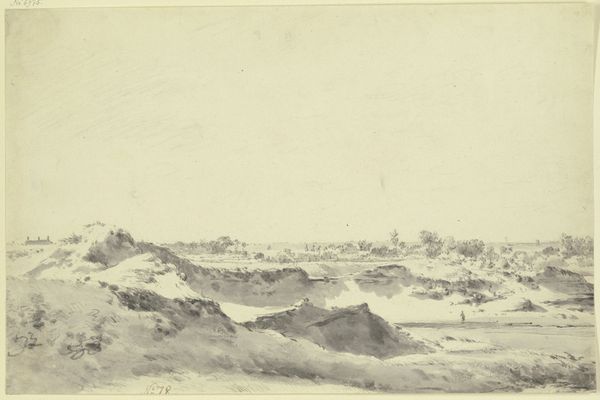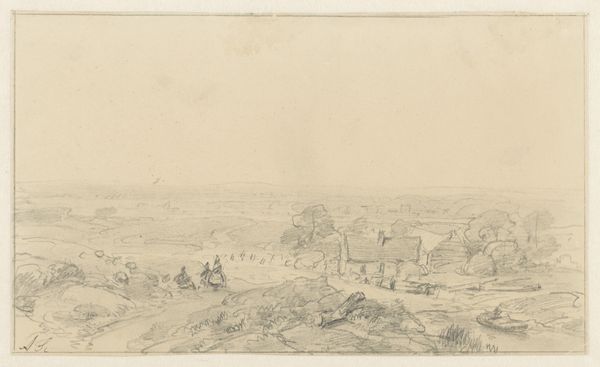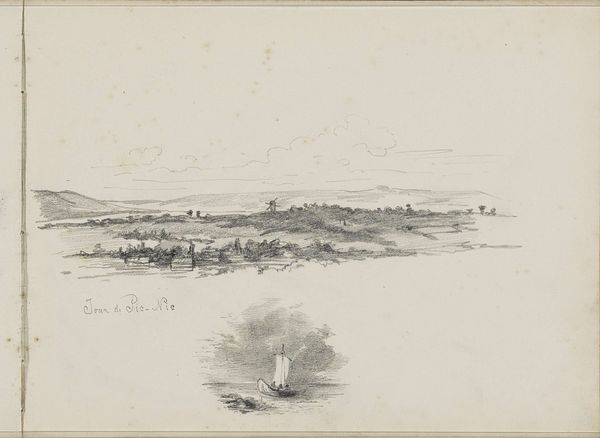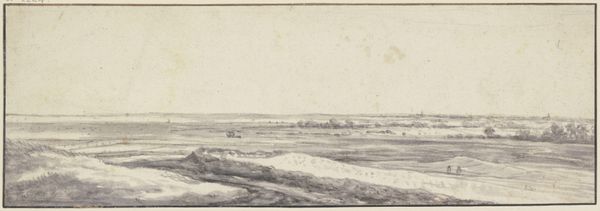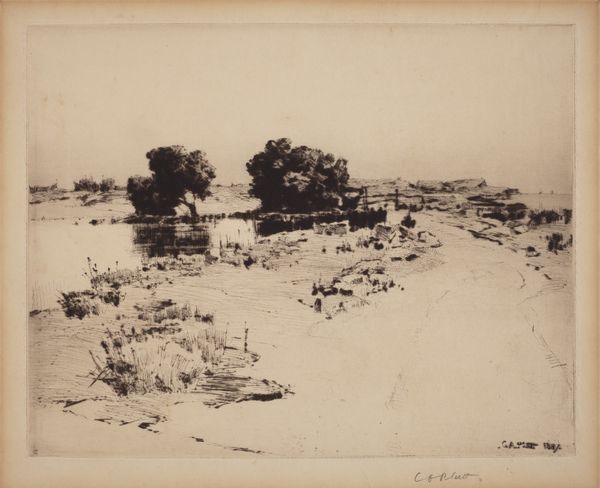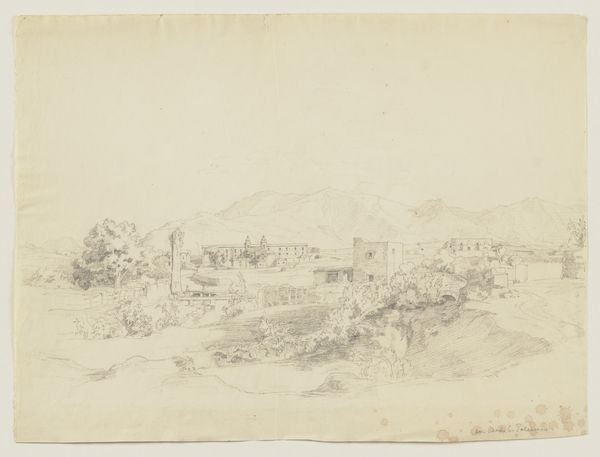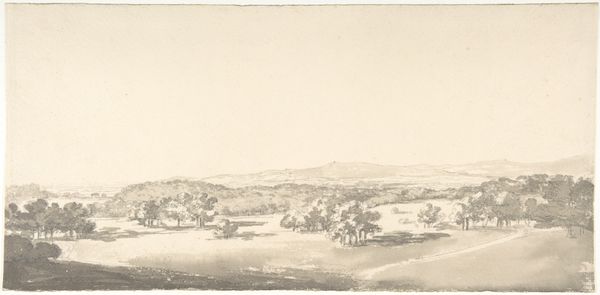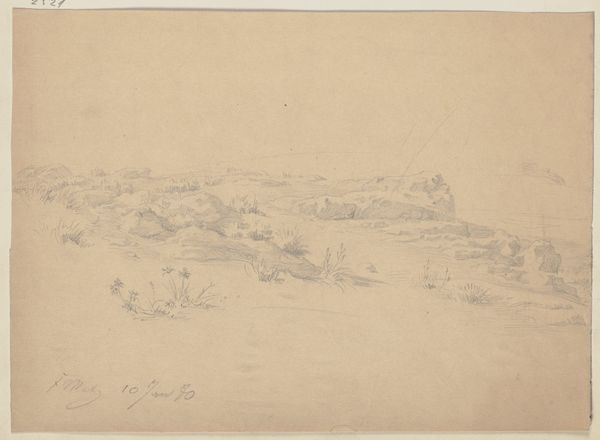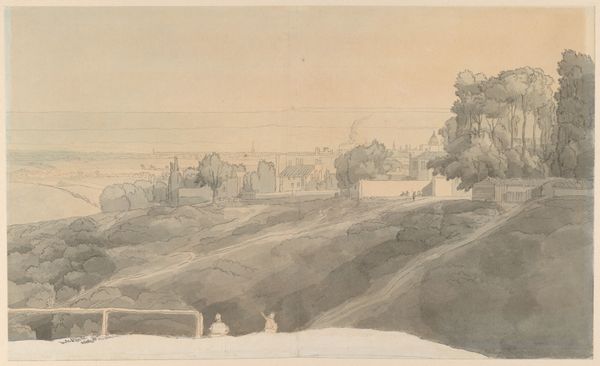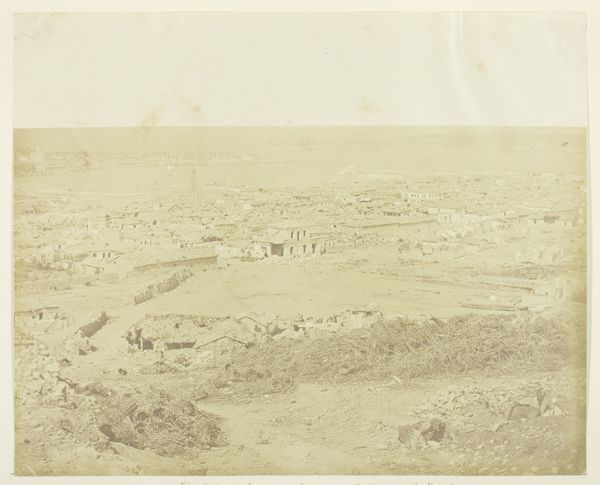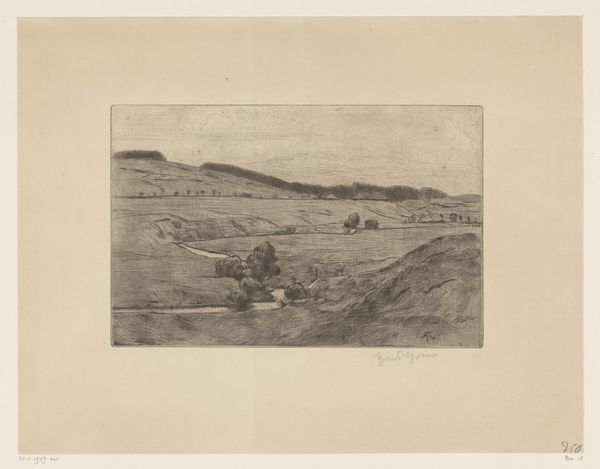
drawing, paper, pencil
#
pencil drawn
#
drawing
#
pencil sketch
#
landscape
#
paper
#
pencil drawing
#
pencil
Copyright: Public Domain
Editor: This delicate landscape, rendered in pencil on paper by Jan Vermeer van Haarlem the Elder, depicts an unknown vista. It’s so ethereal, almost dreamlike in its soft focus and muted tones. What kind of a scene do you think Vermeer was trying to portray, and how does it fit into the artistic and social context of his time? Curator: That's an excellent starting point. I see a reflection on the evolving Dutch landscape and its social implications. Notice the unassuming nature of the scene: it’s not grand or overtly picturesque. The drawing style, so immediate and unpretentious, speaks volumes about the changing attitudes toward landscape art at the time. The emphasis on realism and direct observation over idealized depictions reflects the increasing importance of empirical knowledge. Do you think that focus on 'realism' influenced the choice of subject? Editor: Perhaps. It's definitely less allegorical and more observational than some earlier landscape works. It almost feels like a documentary approach. Were artists then, like reporters, trying to capture a specific reality for public consumption? Curator: That’s insightful. Consider the rise of a wealthy merchant class in the Netherlands at that time. These people wanted art that reflected their own environment and values – art about their nation. The public role of art was shifting, becoming more closely tied to national identity and civic pride. Could this humble landscape also be subtly political? Editor: I hadn’t thought of it that way. It’s easy to see it as a purely aesthetic exercise, but your point about national identity makes a lot of sense. I wonder, too, about how its display in a museum like the Städel now alters our perception, making it seem more precious, more inherently 'artistic'. Curator: Exactly! Our present-day institutions contribute significantly to how we value such artworks today. They provide meaning and historical significance. Reflecting on how this artwork, now in the Städel, may have been originally viewed and circulated is key. Editor: I’ll definitely look at landscape art differently from now on, thinking more about how socio-political currents influenced both its creation and its ongoing interpretation. Curator: A landscape is never just a landscape, is it? It's a repository of social, cultural and political narratives.
Comments
No comments
Be the first to comment and join the conversation on the ultimate creative platform.
